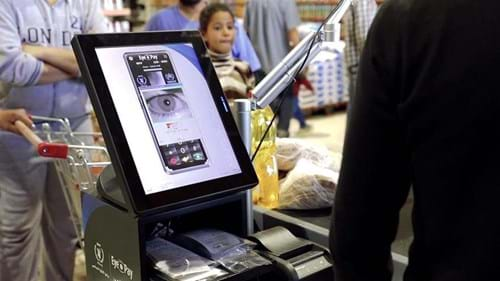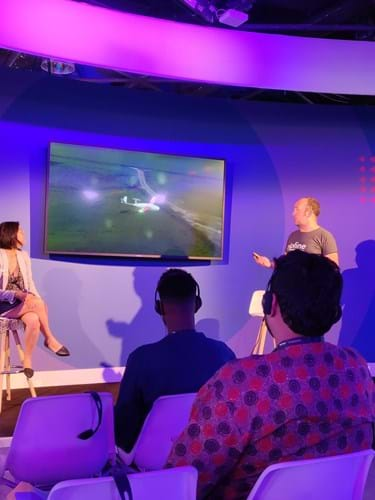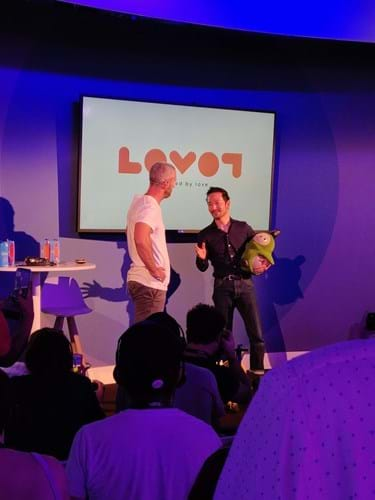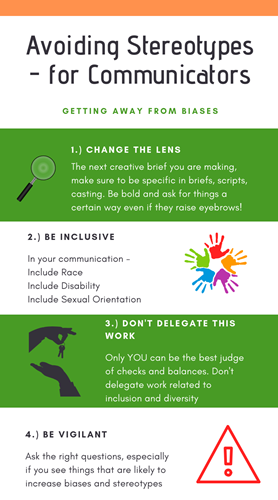
Cannes Day 2: Reverse Innovation & Breaking Stereotypes
Cannes Day 2: Reverse Innovation & Breaking Stereotypes
And what communicators can learn from it.
Kanhaiya Maheshwary is a student in the University of Washington Master’s program in communications and digital media. He’s also one of WE’s student guests at the Cannes Lions Festival of Creativity. Here he gives us the highlights of his second day at the Festival.
Reversing Innovation
When you hear the terms ‘innovation’, ‘invention’ etc., what countries come to mind first? U.S., Canada, the U.K.? Until now, innovations have mostly happened in developed economies, and have trickled down to developing and emerging markets. The first iPhone was launched in the U.S. in 2007, but it only reached Uganda in 2009. By this time, the 3rd iPhone was already launching in the U.S.. There are countless other examples of technological tools that were created in the Silicon Valley far before they reached the farthest corners of the planet.
But over the past few years, we are seeing a trend reversal with regards to innovation and invention. As they say, ‘necessity is the mother of all invention’. The biggest of innovations are now taking place in emerging and developing countries where the need is greatest. Take for example Jordan, where refugees are buying groceries by blinking their eyes! With the help of blockchain technology, United Nations is now scanning the Iris to increase accountability and reduce inefficiencies.

Source: Euronews
Similarly, a company called Zipline found that people are dying in Ghana and Rwanda daily because the poor transportation infrastructure was making it difficult for road vehicles to deliver medicines. Zipline saw this as an opportunity and developed drones that could deliver medicines in 15 minutes! They totally leapfrogged several technologies and jumped directly to a cutting-edge solution. To put things into context, Amazon is still trying to achieve the capability of delivering goods using drones. To date, Zipline has saved over 15,000 lives in Ghana and Rwanda in just a few years.

Source: Zipline drone demo. Taken for WE Communications, by Kanhaiya Maheshwary
Lesson for Communicators?
One size does-not fit all. Avoid retrofitting existing strategies when producing communications for emerging economies and new markets. Communications, just like technology, should reflect the problems and challenges faced by the particular market. Brands that fail to adapt are often shown the door.
Nichole Provatas, Group Head of Digital/Creative/Social at WE Communications, adds that modern marketers and communicators shouldn’t just find inspiration from the friendly and comfortable places we typically look. Go searching for publications, thought leaders, innovators and influencers in unexpected places. Find inspiration from someone who is forging their own path by not being trapped in legacy cycles. Social media is a powerful tool for this.
Breaking Stereotypes
There has been a lot of debate about robots taking away our jobs. It’s said that by 2050, over 50% of the jobs that humans currently do will be performed either by robots or AI. But what if we reverse the equation? We have always seen robots as tools that can be deployed to do work that is too redundant for humans. But why don’t develop other use cases? Silicon Valley is so engrossed in manufacturing robots that will either work in the logistics industry or hospitality industry that we can’t seem to look beyond this myopic vision.
Lovot ™, which comes from the words Love and Robot, is a very cute robot designed to make you happy. But isn’t “emotions” the last word that strikes us when we think about robots? Aren’t they designed to be these emotionless, stoic machines that will one day take over humanity? Lovots have been developed to respond to human moods in order to re-energize humans, get them out of loneliness, and fill them with joy. These cute bots teach us an important thing – it is important to break the stereotypes and look beyond the expected to truly innovate.

Source: Lovot at Cannes Lions. Taken for WE Communications by Kanhaiya Maheshwary
Lesson for Communicators?
It’s time to move away from implicit stereotypes. We should find a new way of communicating things, and look at issues through a new lens. Some of the things that we as communicators can do are –

Infographic: created for WE Communications by Kanhaiya Maheshwary
I asked Nichole Provatas what the biggest contributors were to stereotypes in communications and advertising. “The two biggest contributors to stereotypes are echo chambers and being comfortable,” Nichole told me. “The rise of the echo chamber has been apparent the last few years, particularly as it reached mass media when blamed for wildly incorrect predictions of elections across the world. Social media and algorithms are to blame, and I find that as communicators and marketers, if you continue to look in the same place for right answers and inspiration, the outcome will never change. You can’t expect to achieve anything different if you don’t shake up your process.”
As Steve Stoute advised the audience at Cannes yesterday, be comfortable with being uncomfortable and knowing things will always change.
For more from Kanhaiya, check out Global CEO and Founder Melissa Waggener Zorkin’s conversation on the purpose of purpose.
The latest blogs from WE
Decoding Gen Alpha: A Primer on the Next Gen of Consumers
Why Gen Alpha Will Fuel Spending This Season
Why Reputation Is a Business Driver in Healthcare

